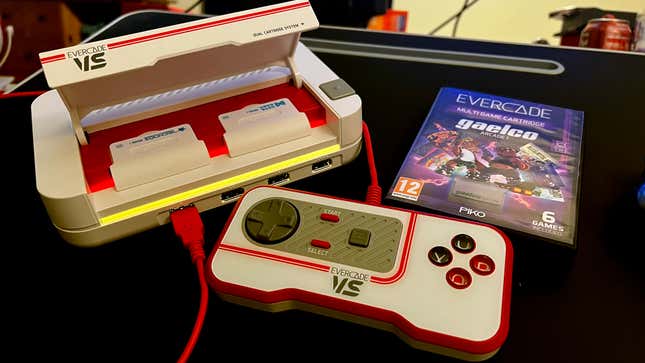
Last year UK company Blaze Entertainment released the Evercade, a lovely handheld gaming system that uses cartridges to play retro game compilations. Now the company is doubling down with the Evercade VS, a TV console with two cartridge slots and support for four-player local multiplayer. Slapping carts into this deck has me reliving the good old days all over again.
When I reviewed the original Evercade last year I gushed about the magic of cartridges. There’s something about the tactile joy of sliding a bit of shaped plastic into a slot that fits it just right. I love the certainty and reliability of the cartridge in our increasingly digital world. It’s nice to hold one in your hand and know that the games loaded on it are the games you get to play. I don’t need an internet connection. I don’t need to download game updates. I just plug it in and I’m ready to go.
As it was for the Evercade handheld, so it is for the Evercade VS. This delightful little box, with its old-school red, black, and gray design and the flip-up cover hiding its dual cartridge slots, looks and feels like technology from the NES era.
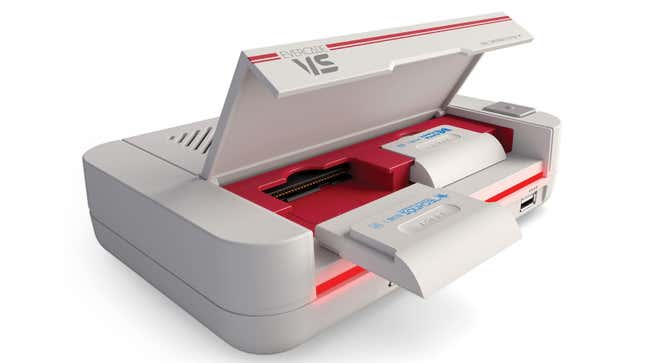
Why two cartridge slots? The original Evercade was a handheld gaming device, which means the cartridge slot was always within arm’s reach. Blaze doubled up on the slots for the new TV-centric VS console to give players access to more games without having to get up off the couch.
The console itself is just a little larger than a docked Nintendo Switch and very light, which makes it easy to slip into a backpack to bring to a friend’s house or gaming party. It connects to a monitor or television via HDMI cable. It can be wirelessly connected to the internet for firmware updates, but the internet is not required to play. All you need is the system, power cable, HDMI, and a USB controller.
When the Evercade VS hits the U.S. in January (December in Europe) it will come in two configurations. There’s the $100 starter pack, which comes with a single controller and a collection of Technos arcade games, or the $130 premium pack, which comes with two controllers, the Technos cartridge, and a cartridge sporting 10 retro arcade games from Data East. Load both cartridges into the system, hook it up to the television, and you get a screen that looks like this:
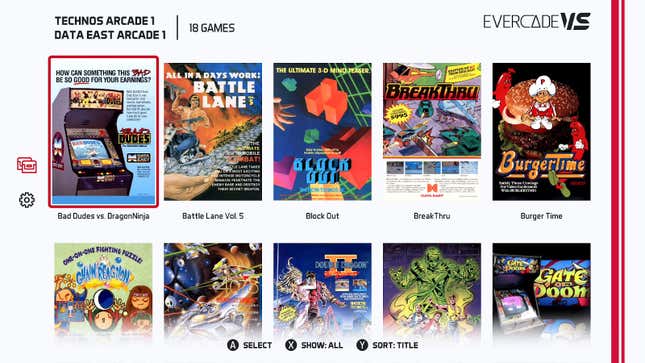
Or similar to that. The system has three different themes to choose from, including Dark, VS Classic, and Light, plus a high-contrast mode for accessibility’s sake. Dramatic electronic music plays in the background as you navigate the menu until you go into the sound settings and mute the hell out of it.
The most important section of the settings menu concerns the display. This is where you can fiddle with aspect ratios, filling your screen with stretched pixels or maintaining the original ratio, depending on your preference. You can simulate scanlines or add a bezel to the screen so the sides of your television don’t feel naked. You can even activate scanlines for the navigation menu, in case you’re that much of a scanline freak.
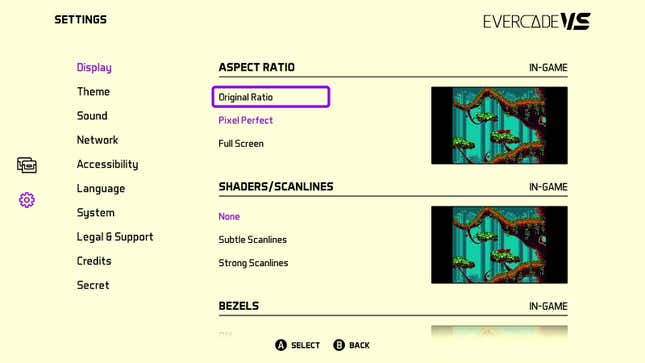
Games load in seconds and play capably enough. The sound is crisp. There’s no noticeable lag. Are you a bad enough dude to watch me fiddle with the menus and play some Bad Dudes?
The only downside I’ve encountered with the Evercade VS came in the wired controllers that come with the console. They’re lightweight plastic, like children’s toys. The buttons are crisp and responsive, but the overall hollow feel keeps putting me off. Fortunately, the Evercade VS supports a wide range of third-party USB controllers, so playing with a more solid gamepad is possible.
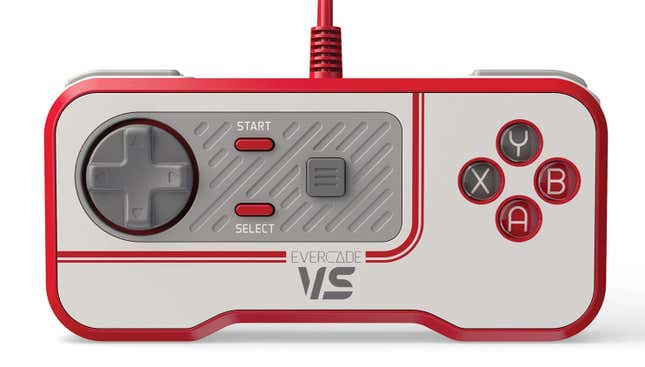
What I love the most about the Evercade VS is what I loved the most about the original handheld Evercade: the cartridges. As of this writing, Blaze Entertainment has a collection of a couple dozen cartridges spanning different publishers, developers, and old-school systems. There are Atari and Intellivision collections. Interplay and Namco. On top of the retro games there are cartridges packed with more modern homebrew indie games.
I love the nostalgia of the cartridge. I love the convenience. But most of all, I love the limits of these cartridges. In a day when I have a device like the MiSTer, an almost magical piece of retro gaming tech capable of playing nearly any pre-2000 game via hardware emulation, it’s nice to have a system that says “these are the games you can play.” Sure, that can be up to 40 games depending on which cartridges I plug into the Evercade VS, but that’s still an easier number to handle than practically all the games. Choice paralysis is real.
Plus, these themed cartridges are a great way to introduce my children to retro gaming classics without giving them access to my nearly $400 MiSTer machine. Will they lose cartridges in the couch? Yes, they already have. But that’s just part of the cartridge gaming experience, which is the whole point of the Evercade VS. It might not be an ideal solution for everyone, but I think this throwback cartridge concept definitely has its niche.





